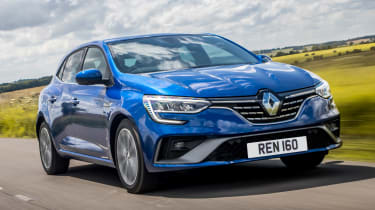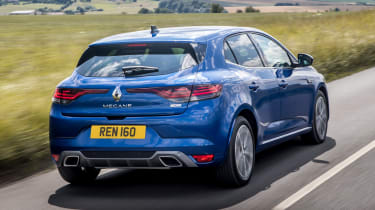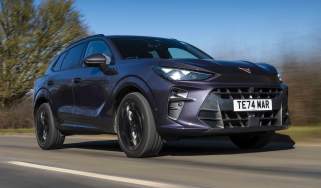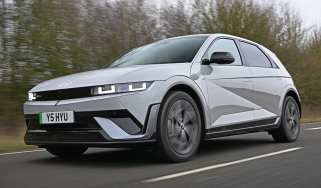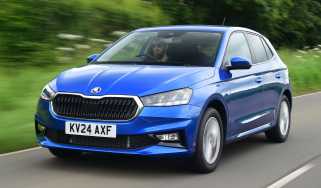Renault Megane hatchback review (2016-2022)
"Smart looks, an impressive infotainment system and plug-in hybrid power aren’t enough to make the Renault Megane stand out from rivals"
Pros
- Good build quality
- Attractive design
- Hi-tech cabin
Cons
- Limited engine choice
- Full-size touchscreen only available on top model
- Steering and gearbox not great
Renault is renowned for giving the Megane a distinctive look, which is useful in a crowded family hatchback class where standing out is essential. Renault learnt the hard way that launching anything too outlandish is risky (the Renault Avantime and Vel Satis from the early 2000s were sales flops) but some buyers still like a break from the norm. The styling of the fourth generation Megane strikes a fine balance between distinctive and divisive. It’s arguably one of the most sophisticated-looking family hatchbacks on sale, and a facelift for 2021 tweaked the styling to keep it fresh.
 The top 10 best family cars 2025
The top 10 best family cars 2025
Compared to the Ford Focus and Vauxhall Astra, the Megane cuts a dash thanks to its C-shaped LED daytime running lights, and distinctive LED rear lights, which almost span the full width of the tailgate. The car can more than hold its own against the SEAT Leon, Mazda3 and Peugeot 308 in the looks department. Used Meganes are also good value but a new one is no longer particularly affordable because it’s now only available as a plug-in hybrid. The petrol and diesel engines were withdrawn in late 2021.
If you thought the Megane's exterior was stylish, you’ll be impressed by the interior too. Dominating higher-spec models is a large portrait-orientated touchscreen, in a similar style to those found in the much more expensive Volvo XC90 and Tesla Model S. Less expensive trim levels make do with a smaller conventional screen but both act as the control centre of an infotainment system that offers DAB radio, even in the entry-level Iconic model.
More reviews
There's Bluetooth connectivity, cruise control, Apple CarPlay and Android Auto compatibility, air-conditioning and alloy wheels across the range. Other luxuries such as sat nav also come as standard on the Iconic model and upwards, as do front and rear parking sensors and automatic wipers and headlights.
At the top of the range, R.S. Line offers the attention-grabbing 9.3-inch portrait touchscreen. There’s also a different exterior design and special 17-inch alloy wheels for a sportier look, along with sports seats and upholstery with red stripes.
Fuel consumption figures have been updated for WLTP testing, with the 1.5-litre diesel engine achieving up to 62.8mpg. The petrol TCe 140 engine returns up to 47.1mpg and VED (road tax) for all Meganes costs the standard amount. That's unless you pick the E-Tech plug-in hybrid, which qualifies for a small discount. Thanks to its 9.8kWh battery it can drive for around 30 miles using electricity alone.
Renault has a good track record for building safe cars and the Megane is no exception, with a five-star rating from independent crash-test body Euro NCAP. We’d recommend adding Renault’s Safety Pack, which is an option for the R.S. Line, because it includes adaptive cruise, lane keeping assistance and E-Call, which can contact emergency services automatically.
All told, the Volkswagen Golf still beats the Megane for quality, and the French car trails the Ford Focus and SEAT Leon for driving fun, but it's still a good all-round package that blends style, comfort, technology and economy - as long as you can afford it now that it’s a plug-in hybrid model only. Despite its advancing years, a thorough facelift has helped keep the Megane competitive with its numerous rivals and the E-Tech will appeal to company-car buyers.
The Renault Megane is going through a thorough overhaul, however; the next-generation car is a fully electric SUV, rather than a hatchback. Renault hopes the change in design will draw buyers back to the Megane. The Renault Megane E-Tech Electric SUV is on sale from February 2022 and you can read our review here.

